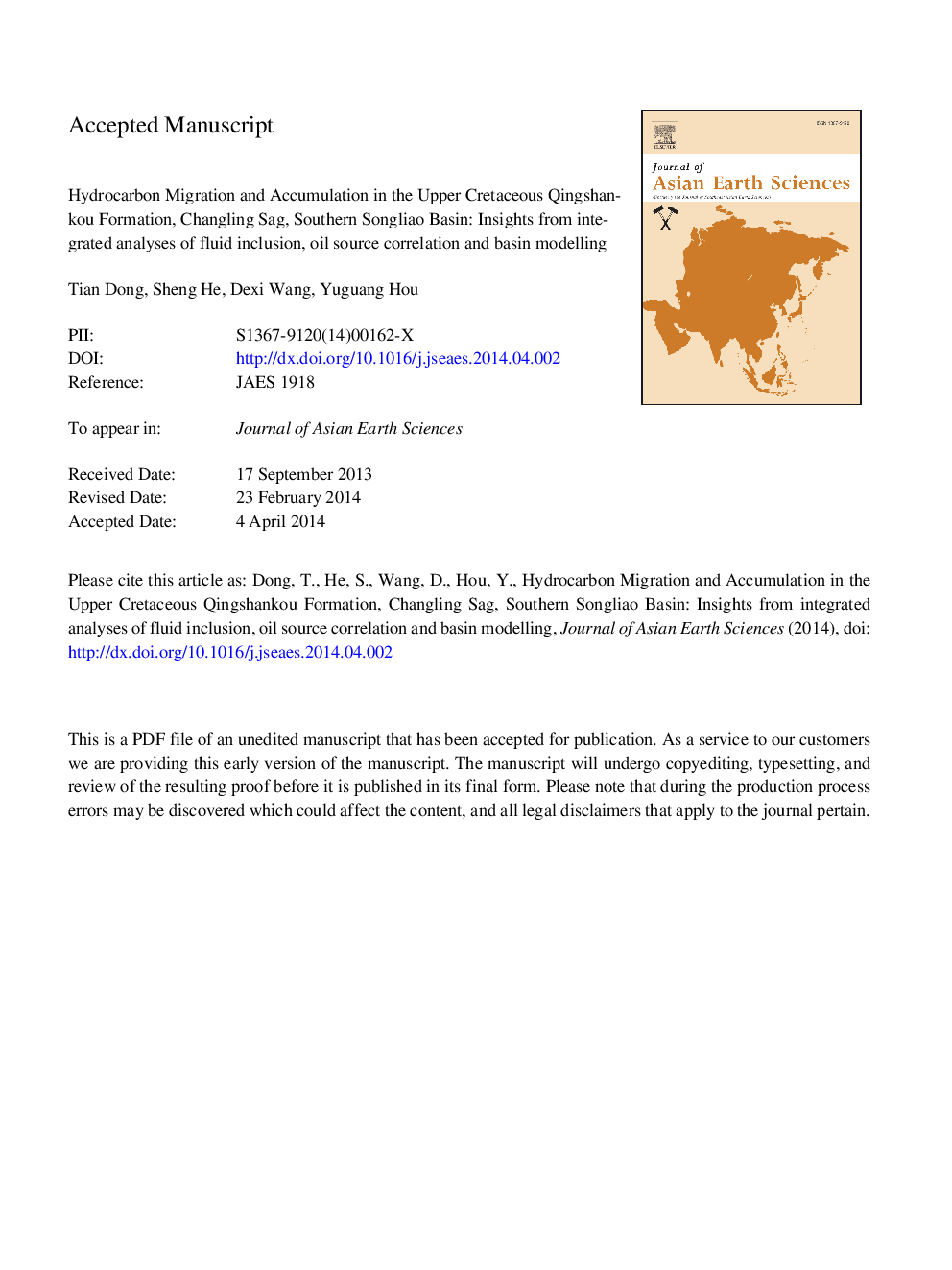| کد مقاله | کد نشریه | سال انتشار | مقاله انگلیسی | نسخه تمام متن |
|---|---|---|---|---|
| 6444437 | 1640378 | 2014 | 48 صفحه PDF | دانلود رایگان |
عنوان انگلیسی مقاله ISI
Hydrocarbon migration and accumulation in the Upper Cretaceous Qingshankou Formation, Changling Sag, southern Songliao Basin: Insights from integrated analyses of fluid inclusion, oil source correlation and basin modelling
دانلود مقاله + سفارش ترجمه
دانلود مقاله ISI انگلیسی
رایگان برای ایرانیان
کلمات کلیدی
موضوعات مرتبط
مهندسی و علوم پایه
علوم زمین و سیارات
زمین شناسی
پیش نمایش صفحه اول مقاله

چکیده انگلیسی
The Upper Cretaceous Qingshankou Formation acts as both the source and reservoir sequence in the Changling Sag, situated in the southern end of the Songliao Basin, northeast China. An integrated approach involving determination of hydrocarbon charging history, oil source correlation and hydrocarbon generation dynamic modeling was used to investigate hydrocarbon migration processes and further predict the favorable targets of hydrocarbon accumulations in the Qingshankou Formation. The hydrocarbon generation and charge history was investigated using fluid inclusion analysis, in combination with stratigraphic burial and thermal modeling. The source rocks began to generate hydrocarbons at around 82Â Ma and the hydrocarbon charge event occurred from approximately 78Â Ma to the end of Cretaceous (65.5Â Ma) when a large tectonic uplift took place. Correlation of stable carbon isotopes of oils and extracts of source rocks indicates that oil was generated mainly from the first member of Qingshankou Formation (K2qn1), suggesting that hydrocarbon may have migrated vertically. Three dimensional (3D) petroleum system modeling was used to evaluate the processes of secondary hydrocarbon migration in the Qingshankou Formation since the latest Cretaceous. During the Late Cretaceous, hydrocarbon, mainly originated from the Qianan depression, migrated laterally to adjacent structural highs. Subsequent tectonic inversion, defined as the late Yanshan Orogeny, significantly changed hydrocarbon migration patterns, probably causing redistribution of primary hydrocarbon reservoirs. In the Tertiary, the Heidimiao depression was buried much deeper than the Qianan depression and became the main source kitchen. Hydrocarbon migration was primarily controlled by fluid potential and generally migrated from relatively high potential areas to low potential areas. Structural highs and lithologic transitions are potential traps for current oil and gas exploration. Finally, several preferred hydrocarbon accumulation sites have been identified by this work, like Western Slope, Southern uplift, and Eastern Slope, helping reduce the risk on targeting hydrocarbon potential reservoirs in Changling Sag.
ناشر
Database: Elsevier - ScienceDirect (ساینس دایرکت)
Journal: Journal of Asian Earth Sciences - Volume 90, 15 August 2014, Pages 77-87
Journal: Journal of Asian Earth Sciences - Volume 90, 15 August 2014, Pages 77-87
نویسندگان
Tian Dong, Sheng He, Dexi Wang, Yuguang Hou,